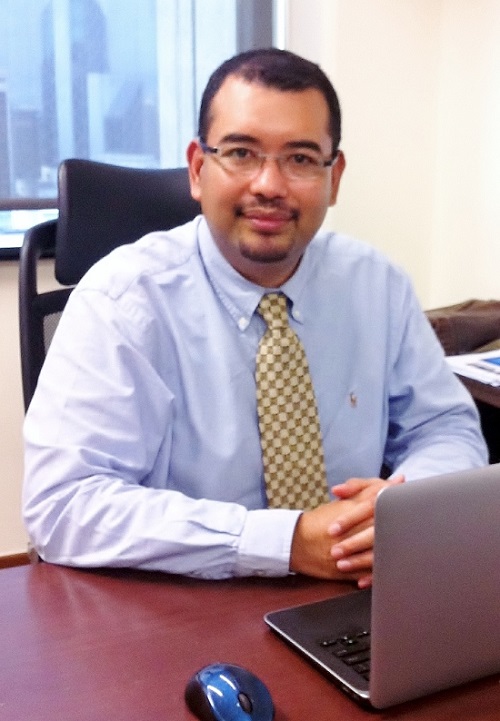At Maybank, innovation driven by desire to remain relevant
By Karamjit Singh April 16, 2015
- Already has track record in launching digital services
- Focus on launching prototypes to test market traction

YOU may think that Amran Hassan had a thankless task ahead of him when in 2013 innovation was added to his corporate development role at Maybank Bhd, and he became head Corporate Development & Innovation.
Maybank is Malaysia’s largest bank, with a presence in 20 countries, mainly in Asia, and a market capitalisation of RM87 billion (US$23.5 billion).
But it turns out that Maybank, despite the stodgy and plodding image of banks, especially large ones with 47,000 staff as Maybank, actually has innovation in its DNA (deoxyribonucleic acid).
Which is why when group president and chief executive officer (CEO) Abdul Farid Alias launched two apps yesterday (April 15), he was able to reel off a string of ‘digital firsts’ around its banking services, starting with being the first Malaysian bank to computerise in 1978, the first to introduce ATMs (automated teller machines) in 1981, and the first to launch Internet banking in 2000, among others.
READ ALSO: Maybank launches two digital ‘non-banking’ apps
Incidentally, the launch also now allows the bank to boast of a South-East Asian first – that there is no similar property app in the region that has been developed by a financial institution displaying properties available for sale in real-time.
Yet, bragging rights aside, Maybank’s innovation push has always had one objective: To better serve customers.
As Farid noted at the launch, “Today, with the advent of technology and the shift to the digital space, we are riding that wave of change to ensure that we continue to remain relevant to customers and utilise our strengths in this area to serve them regionally.”
This is where Amran’s innovation unit comes in: “To really give the bank’s existing innovation culture a steroid boost,” he says.
Having the 15-strong unit sit under CEO Farid’s office sends a strong statement about the intention as well. “He wants speed and outcomes,” Amran tells Digital News Asia (DNA), speaking in Kuala Lumpur recently. Amran though reports to the Group Chief Strategy Officer Michael Foong.
But not immediately, as even Farid recognises this will take time. “For us to move the needle in a 47,000-strong organisation, we need to change the mindsets of at least 10% to 15% of the people,” says Amran.
The way he plans to approach this is by adopting some philosophies from the startup ecosystem. At the same time, Maybank is organising a fintech (financial services technology) accelerator with a four-country roadshow already started. The aim is to accelerate the bank's innovation trajectory by welcoming startups to help solve some of the challenges the bank is facing in a rapidly changing market.
For instance Farid highlights that bout 40% of mass affluent customers now prefer online or mobile banking, and among those under 40 years of age, around half prefer digital banking. Maybank is determined to capture a larger share of this segment than its competitors. Enter Amran and what his unit will be trying to do.
 “I think failing fast is a good principle to follow as we introduce new prototypes,” says Amran (pic). Another principle is to measure everything they try, and to figure out why things fail so as to learn and apply the lessons.
“I think failing fast is a good principle to follow as we introduce new prototypes,” says Amran (pic). Another principle is to measure everything they try, and to figure out why things fail so as to learn and apply the lessons.
In tandem with this, not being afraid to try is another philosophy that he plans to adopt.
With the focus on developing prototypes of any service or solutions Maybank aims to build, with cross-functional teams of executives from IT, Finance and Amran’s innovation unit, the work done over 2014 has been mainly in putting in a regional platform that will enable Maybank staff from across South-East Asia to participate in innovation teams and projects.
While the end goal is about being innovative and building products that customers will want to use, Amran is not neglecting the soft touch.
“My team has also been spending time building relationships with the other business units within the group and in the South-East Asia countries,” he says.
There are also plans to house the innovation unit and its activities separately, away from corporate headquarters especially, to create a more hip environment with a lighter and more energetic vibe. “Watch this space,” he adds.
As important as the digital platform is for the group, Amran points out that the team is not strictly focused on digital, with one current prototype in place that involves safe boxes.
“Anything we do in terms of prototypes must be able to [increase the] operational efficiency of the group, or be able to eventually increase revenue,” he says.
Anything Maybank tries, and it will be looking at other verticals for inspiration, will need to be centred on answering the question: “Will it solve a challenge or create an opportunity?”
Maybank’s Innovation report for 2015, which will be the second such report after one in 2013, will then be the instrument to gauge how far Amran and his team, all non-bankers, have managed to move Maybank’s innovation needle.
Related Stories:
Maybank Group to tap startups to boost innovation
Maybank first Asean bank to launch Windows Phone 8 app
Soft Space lands Maybank and Maxis in latest mPOS deal
Mobile banking apps more vulnerable than you think: Researcher
For more technology news and the latest updates, follow us on Twitter, LinkedIn or Like us on Facebook.


